Affiliate disclosure: This post may contain affiliate links. Please see our Privacy Policy.
Pineapple Weed infused vinegar is a tasty way to use tasty, brightly flavored flowers of this edible wild weed.
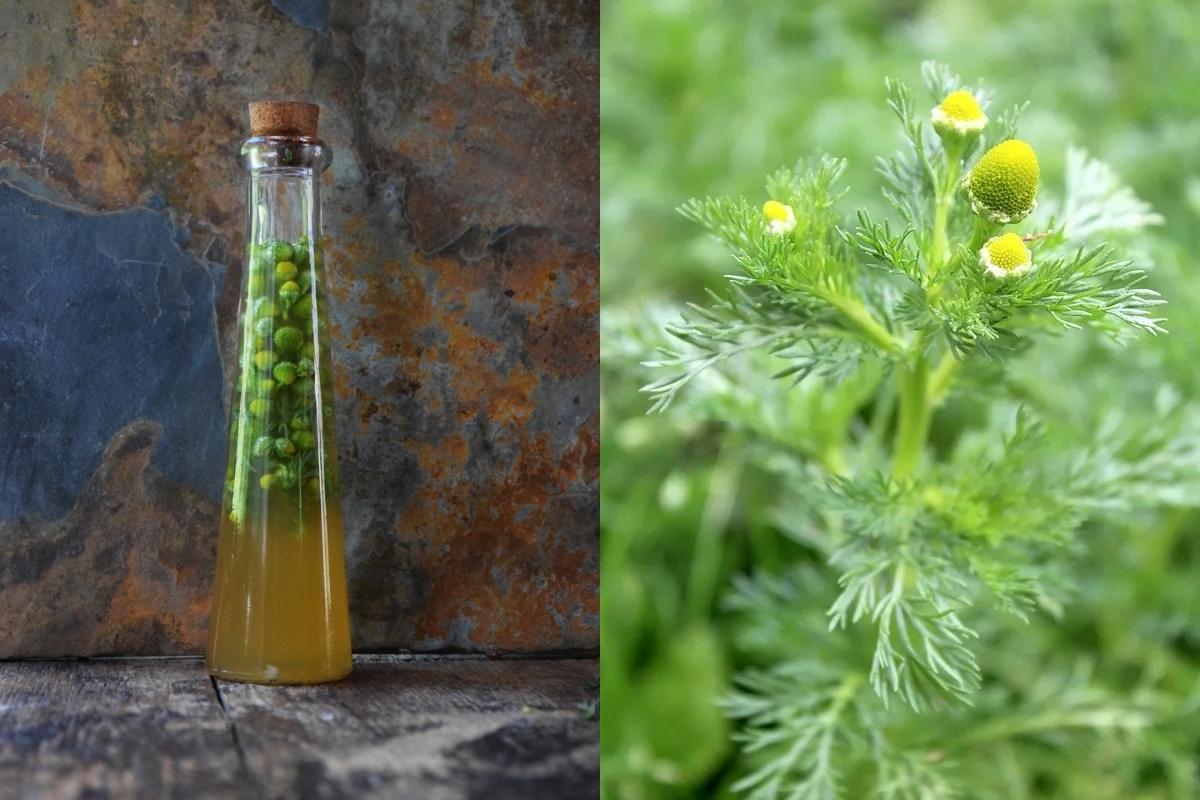
Pineapple weed (Matricaria discoidea, also known as wild chamomile) was one of the first wild edible plants I learned to identify as a kid (after dandelions, of course).
Growing up in the dry desert of California, there weren’t all that many lawns, so in turn, dandelions were sparse.
Pineappleweed, on the other hand, was pretty common. It thrives in horrible soil and sidewalk cracks, just as dandelions do in areas with more rain.
I’d see it everyday sprouting from the asphalt on my elementary school playground, where it thrived even when it was run over by children each day on the handball courts.
Now in Vermont, we find it growing out of the edges of gravel driveways, anywhere tires don’t tread too often.
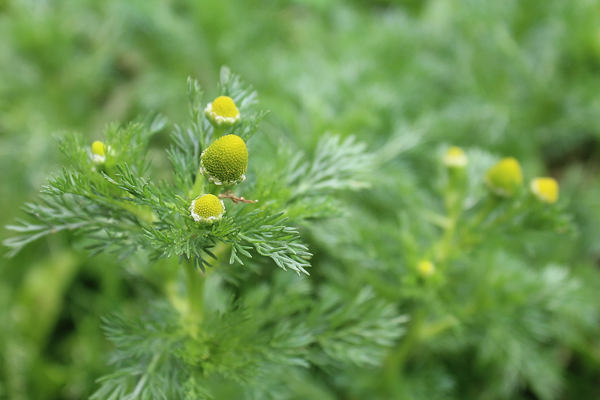
If you’re foraging pineappleweed, it’s easy enough to find just about anywhere in the world. It looks a lot like regular chamomile, but without the petals.
The flavor is sweet and pineapple-y, with hints of the floral characteristics of cultivated chamomile.
This particular recipe is for a simple pineappleweed infused vinegar, and it comes from Pascal Baudar’s new book, Wildcrafted Vinegars.
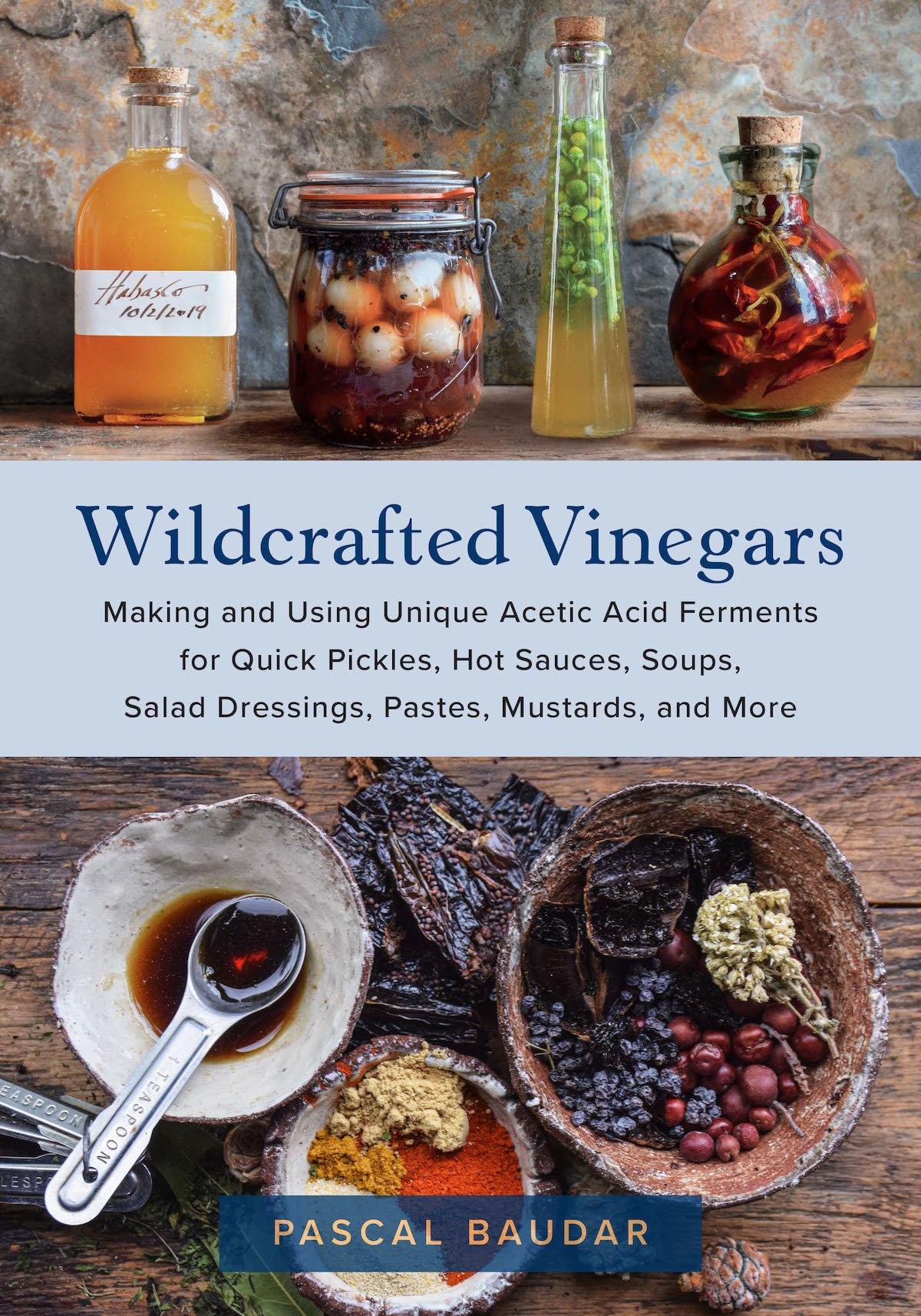
The following excerpt is from Pascal Baudar’s book Wildcrafted Vinegars: Making and Using Acetic Acid Ferments for Quick Pickles, Hot Sauces, Soups, Salad Dressings, Pastes, Mustards, and More (Chelsea Green Publishing, Oct 2022) and is reprinted with permission from the publisher. It has been edited slightly for format and length to fit the web.
Pineappleweed Vinegar
Pineapple weed is perhaps better known as chamomile. You can make this recipe with wild or regular varieties of this plant.
Although the flavors won’t be the same, both will result in a delicious vinegar. The plant I forage locally is called pineapple weed for good reason: The flowers taste very much like pineapple. It does not have the white petals often associated with chamomile flowers, however.
Pineapple weed is an annual plant native to northeast Asia, but you’ll find it all over North America, Canada, and England. I find it on hiking trails, along roadsides, and in city parks and construction areas. The plant loves disturbed soil.
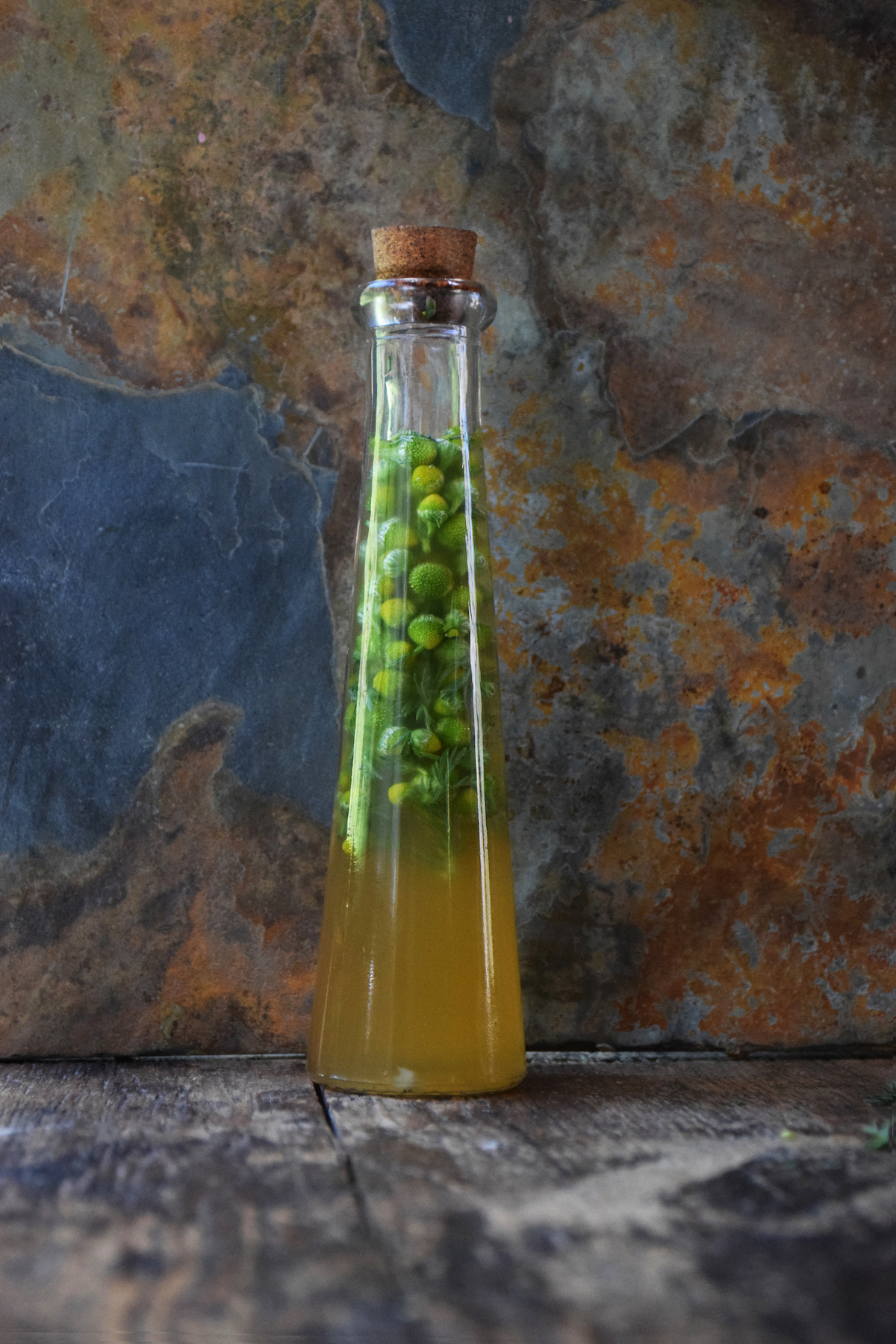
When you forage it, make sure you’re not in an area where herbicides are sprayed. As its name indicates, it’s considered a weed. I’ve always been able to find pristine locations to forage it. In Los Angeles, I used to find it on the hiking trails in the Angeles National Forest. I’m currently in Colorado and visited a friend who is an organic farmer. The plant was quite abundant on his property.
I only use the flowers, which are easy to remove. I don’t bother collecting the leaves, as they don’t have much flavor. For making the infused vinegar, its best to use the flowers fresh for optimal flavor.
I’ve never bothered weighing the flowers for a recipe. I’ve always used the ratio of 1 part flower heads to 2 parts vinegar.
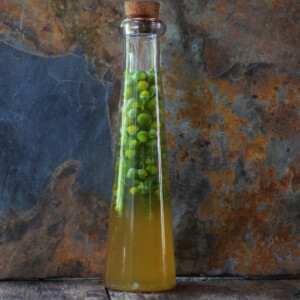
Pineappleweed Infused Vinegar
Ingredients
for a 1-cup jar (240 ml)
- 1/3 cup 17 g pineapple weed flowers
- 2/3 cup 160 ml apple cider vinegar (raw or pasteurized), see note*
- 2 1/2 tablespoons 37 ml maple syrup
- 1 1/2 teaspoons 7.5 g salt
Instructions
- Rinse the flowers briefly under cold running water, then place them in a jar, bottle, or similar glass container.
- Mix the vinegar, maple syrup, and salt together.
- Pour the seasoned vinegar over the flowers.
- Fill the container as much as possible, minimizing the amount of oxygen.
- Cap tightly and allow to stand 2 to 3 weeks in a cool, dark place.
- Strain the vinegar and discard the flowers.
- Transfer the vinegar into a clean bottle or glass container.
- Seal tightly and store in the refrigerator or a cool, dark place (below 65°F/18°C).
- Shelf life for optimum flavors is around 6 months, or up to a year in perfect storage conditions.
Notes
About the Author
Pascal Baudar is the author of three previous books: Wildcrafted Fermentation (2020), The Wildcrafting Brewer (2018), and The New Wildcrafted Cuisine (2016). A self-described “culinary alchemist” he leads classes in traditional food preservation techniques.
Through his business, Urban Outdoor Skills, he has introduced thousands of home cooks, celebrity chefs, and foodies to the flavors offered by their wild landscapes. In 2014, Baudar was named one of the most influential local tastemakers by Los Angeles Magazine.
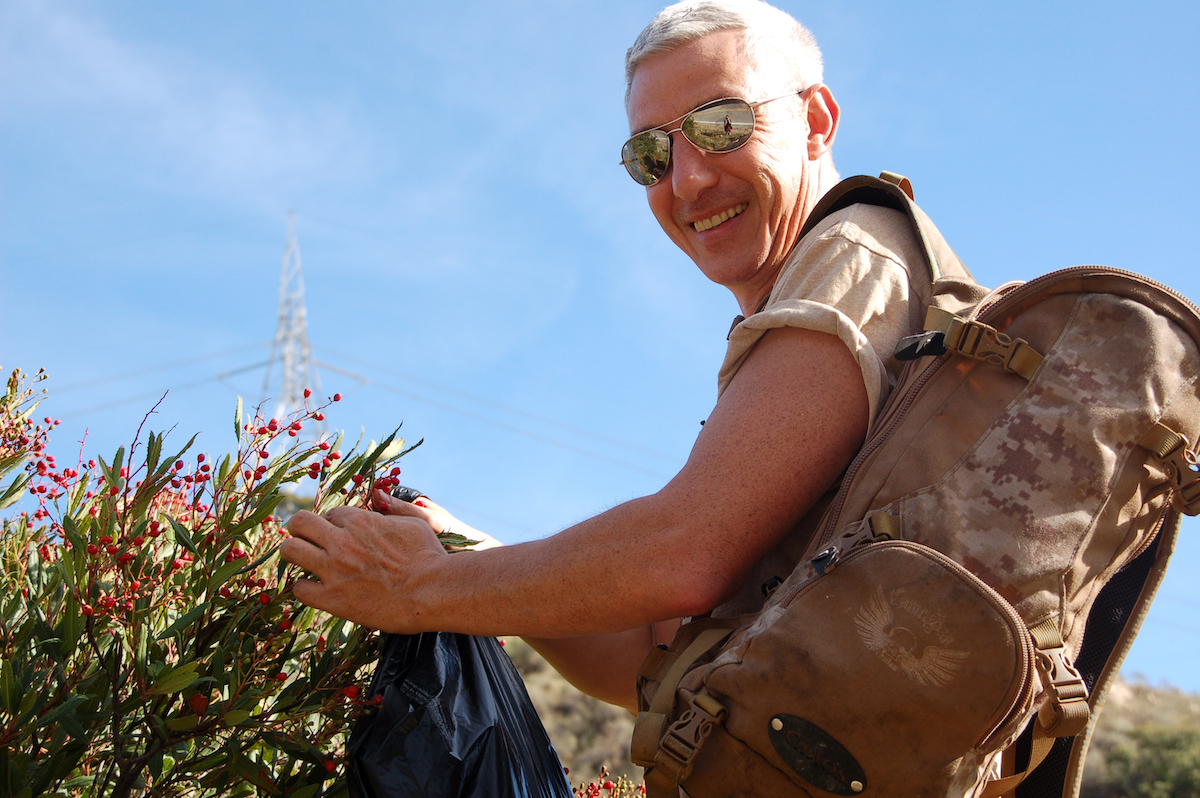
Ways to Use Pineappleweed
Looking for more ways to enjoy wild foraged pineappleweed?
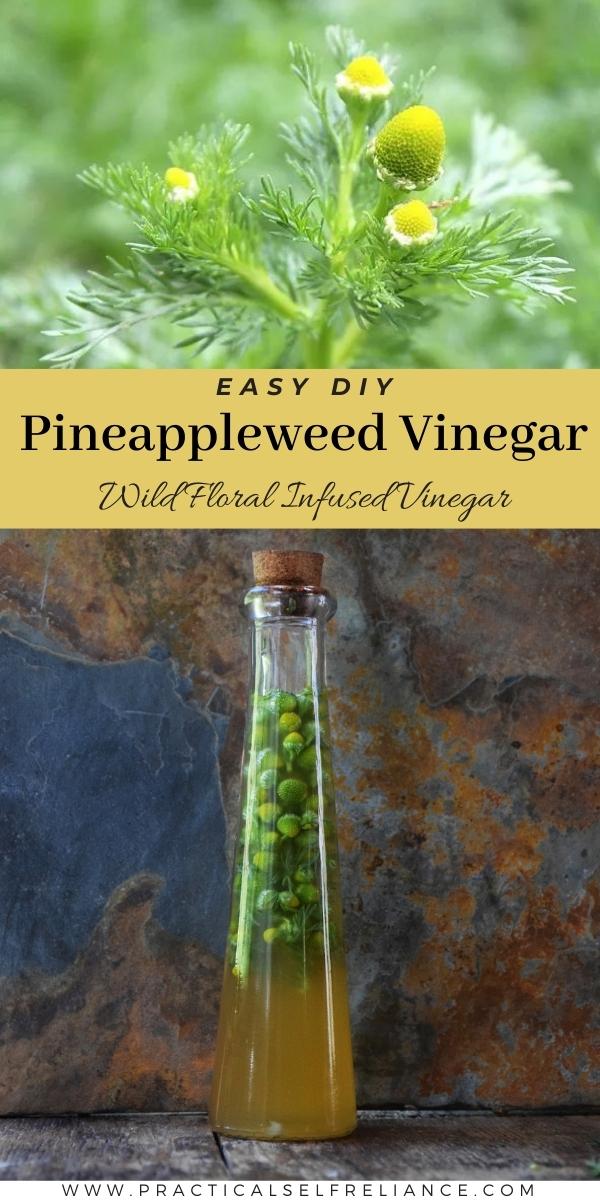




Regarding the blueberry recipe, 6-8month fermentation?? This seems extremely slow but is thisvyour experience with blueberry wireless?
Regards
Paul
So I think you’re asking about the blueberry wine recipe posted here: https://practicalselfreliance.com/blueberry-wine/
The 6-8 months fermentation time in that recipe is optional, and I tend to ferment wines for extended periods because I don’t use stabilizers to kill off the yeast. If you do that technique, then you need more time to make sure the yeast die out on their own so you don’t get carbonated or exploded bottles.
If you look at the instructions, that’s an optional step:
”
Stir daily for 5 to 7 days. Once the fermentation calms down a bit, rack into a sanitized glass brewing carboy, add oak chips if using and seal with a rubber bung and water lock.
Ferment in secondary for 4 to 6 weeks.
At this point, either rack the wine again to ferment for another 6 to 8 months….or add 1 crushed Campden tablet and rack into a clean fermenter for a few weeks until the wine clears.”
The extra time there is if you want to allow the wine to mellow and clear in the fermenter. If not, you can kill off the yeast with stabilizers and bottle, but then for the same flavor you’ll want to let it mellow and clear in the bottle.